I spent 16 days on holiday in India and Singapore from 24 October to 8 November 2018. India is a colourful interesting place, bustling with people. Spiritual and mysterious. Sacred and smelly. Noisy and peaceful. So many contrasts. I found the people are generous, friendly and family oriented. Wifi and internet speed is wonderful.
We explored the “Golden Triangle” – Delhi, Jaipur and Agra. Which covered a small part of the huge desert state of Rajasthan. We arrived in New Delhi, flew to Udaipur and spent 2 days in the beautiful city, and only one night in tiny Ranakpur, 2 days in the town of Pushkar (see Part 1); 3 days in Jaipur city (Part 2). We drove to Agra and stayed there for 3 days and spent the last 2 days in New Delhi (see Part 3). After my India trip I spent 2 days and one night in Singapore on the way back to Australia. (see Part 4).
Part 2
On Tuesday 30 October we drove from Pushkar to Jaipur in our 10 seater bus. It took about 3 hours, and we went through lots of toll stations, through dusty desert countryside of Rajasthan, sometimes green and bushy, with an occasional bright red sari on a woman walking by.
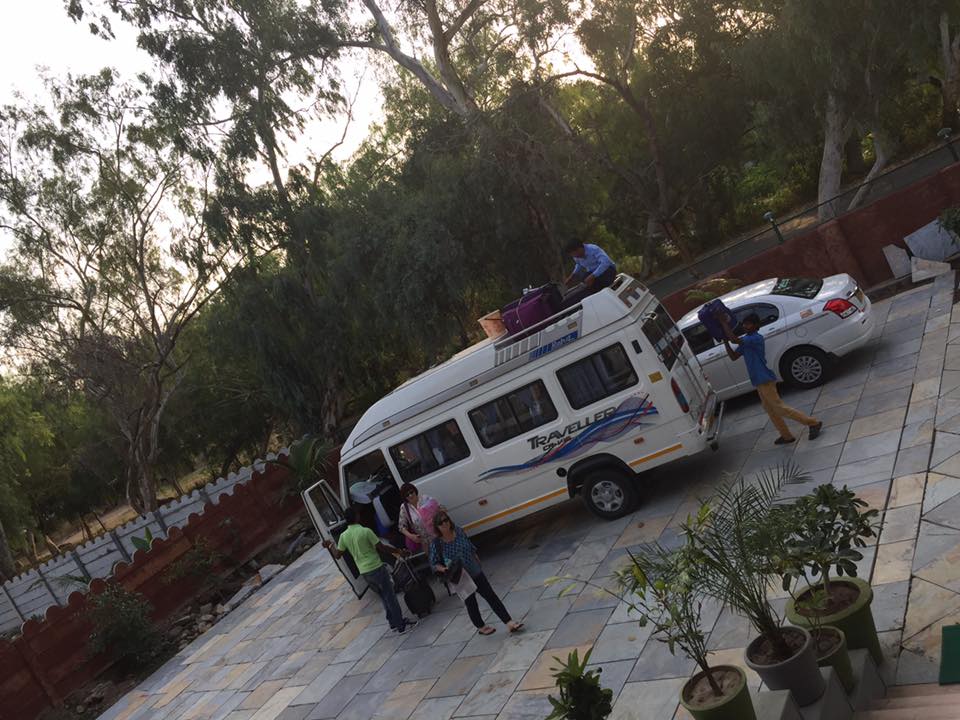
our Traveller bus 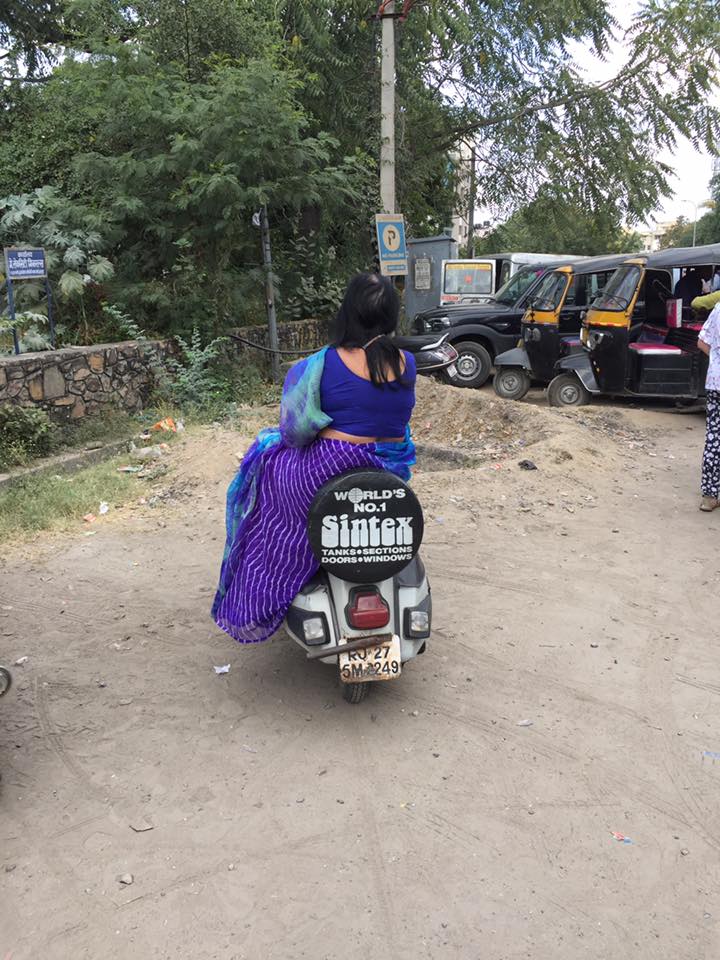
purple sari 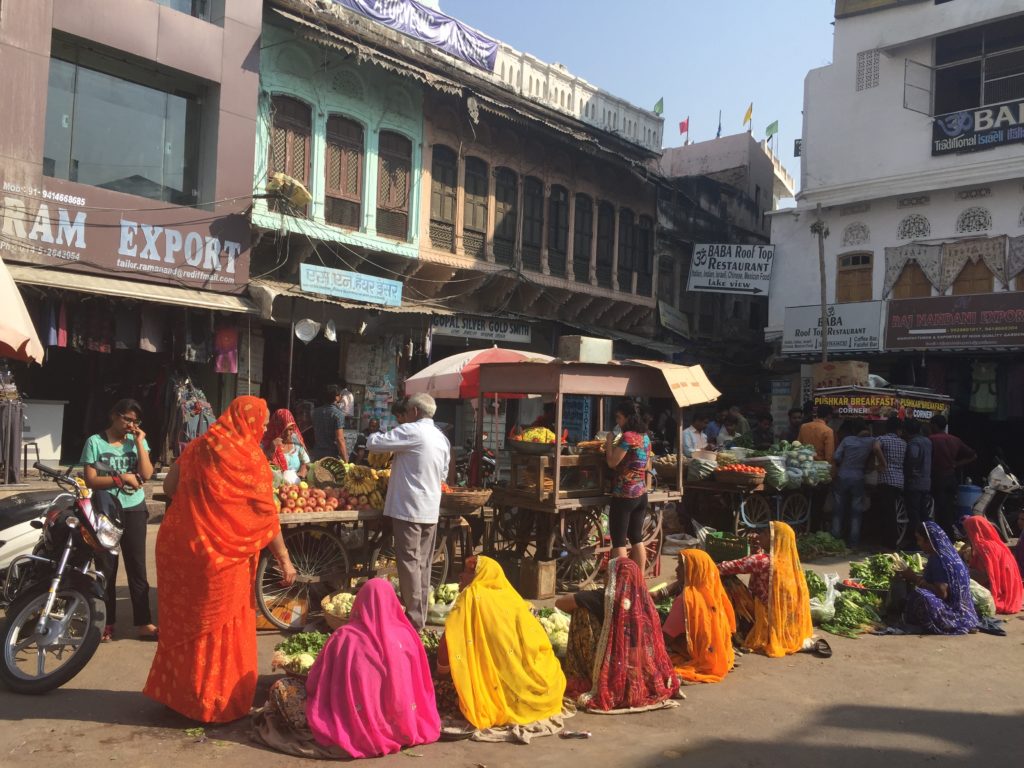
beautiful colourful saris in Pushkr
Jaipur
Jaipur has a population of 6 million people. Compared with 5 million in all of New Zealand!
There are about 23 million people in all of Australia and the same number just in the city of New Delhi!!
The walls of Jaipur were painted pink in 1900 for Prince of Wales and they liked them so they stayed this interesting shade of salmon pink!
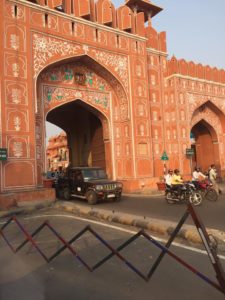
Jaipur Textile Factory
We visited the large warehouse of Jaipur Textile Factory, and had a guided tour to see how the fabrics are made and printed. We saw traditional hand weaving, traditional block printing on fabric using wooden blocks overlaid with several colours and patterns. All weaving, printing, measuring, cutting and sewing is done by men.
We enjoyed seeing the showing of colourful Pashmina throws, doonas, picnic throws, table cloths, pillows, cushion covers which were made from silk, wool, cotton and in all colours of the rainbow – peacocks, elephants, abstract, floral, traditional, all really beautiful! King size embroidered covers take 15 days to make 3 hrs per day. I fell in love with a peacock table cloth, 2 cushion covers and a huge turquoise, pink and purple floral Pashmina throw for my bed, which I had posted back to Australia. We could also order made-to-measure clothing, so I chose a lovely soft Indian cotton fabric printed with turquoise and purple floral design to make up into a top, which was lovely and cool to wear. I wore it to the Taj Mahal in Agra. And I bought some gold and brown paisley fabric for sarongs.
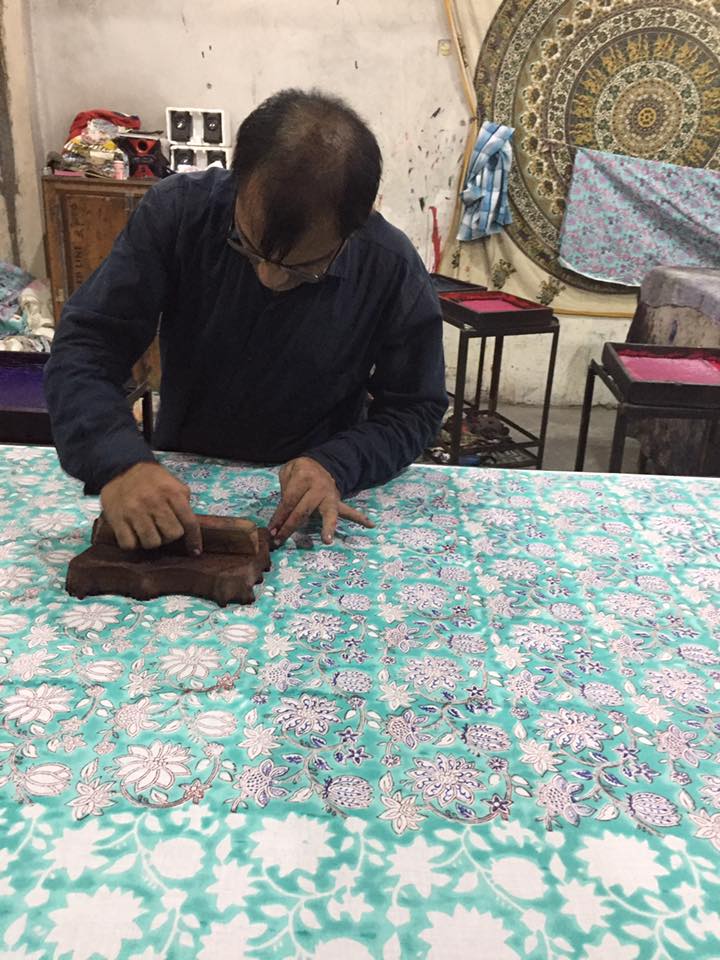
Jaipur Textile printing fabric 02 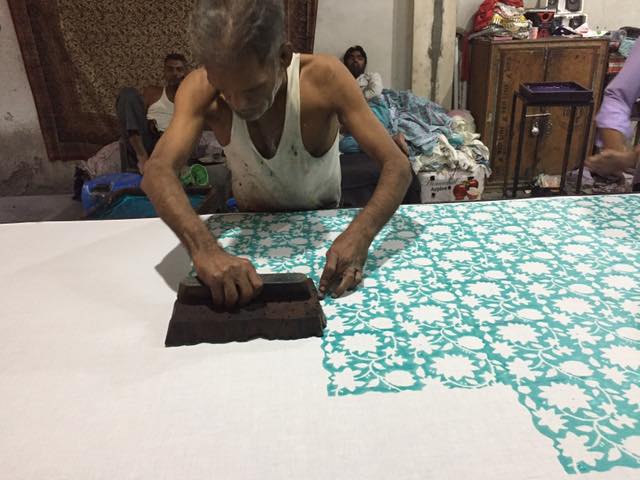
Jaipur Textile printing fabric 01 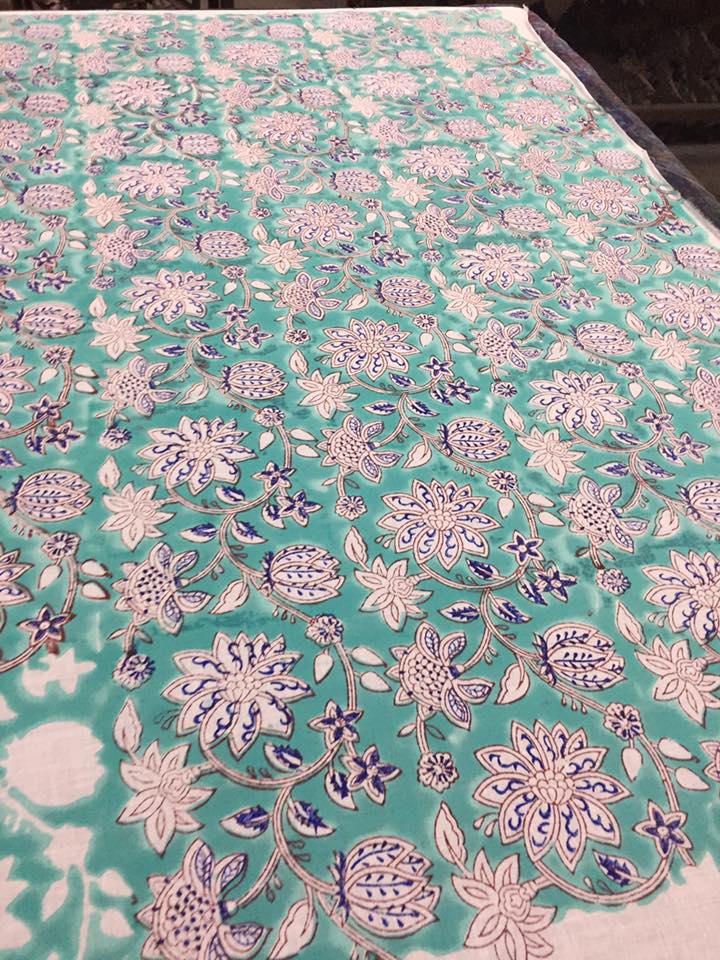
Jaipur Textile printing fabric 03 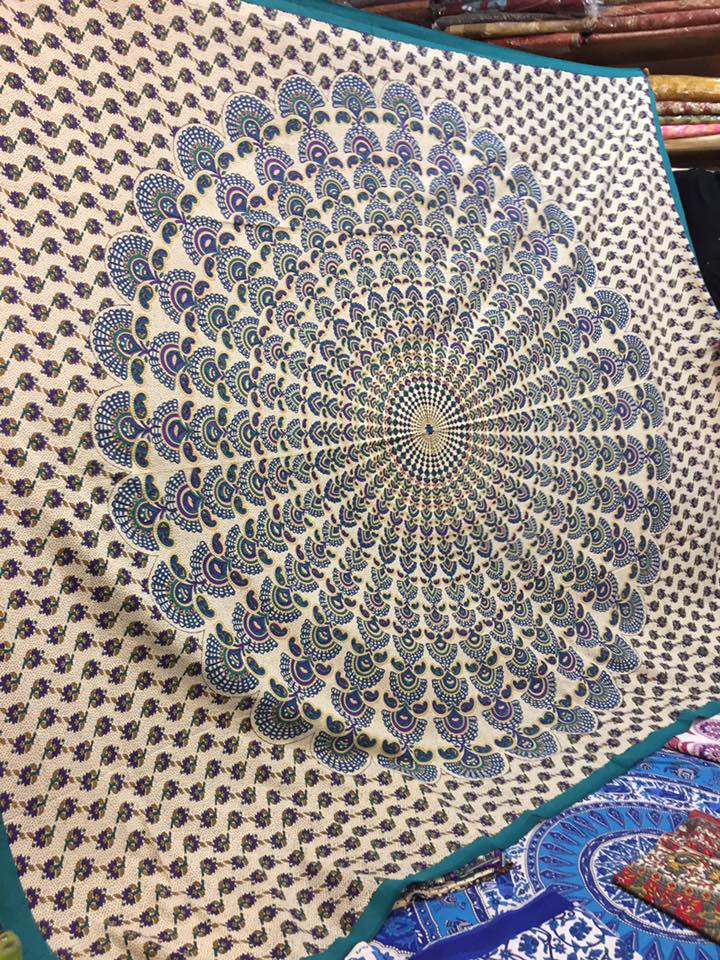
peacock table cloth 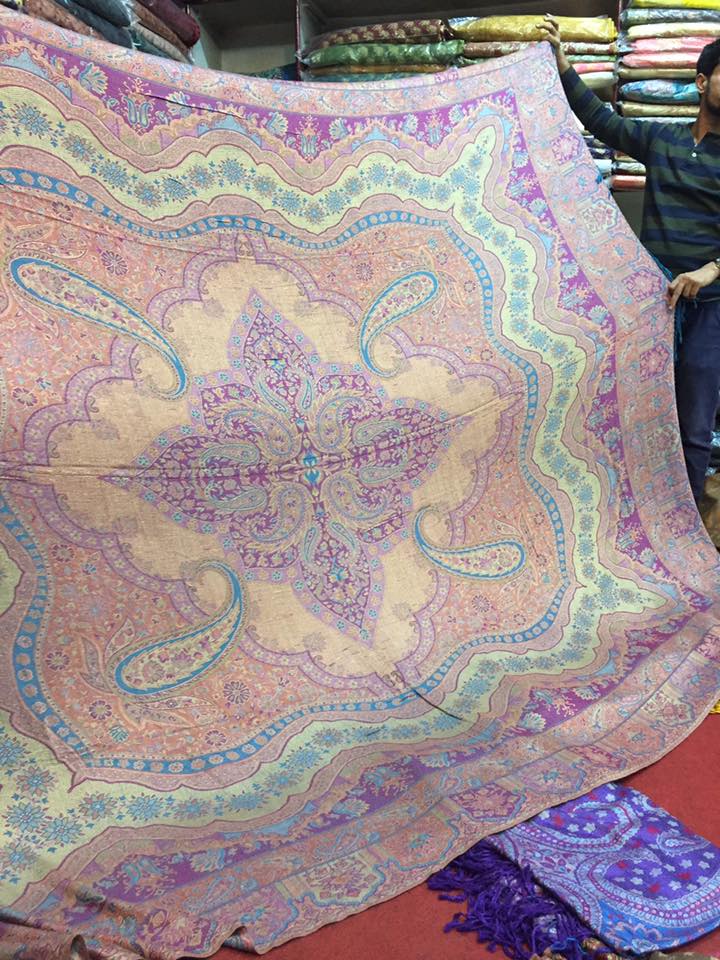
Pashmina cover
We stayed in palatial Krishna Palace hotel, which was a lovely multi-storied accommodation – no lifts of course, we all just walked upstairs and our luggage was carried up by the helpful male staff.
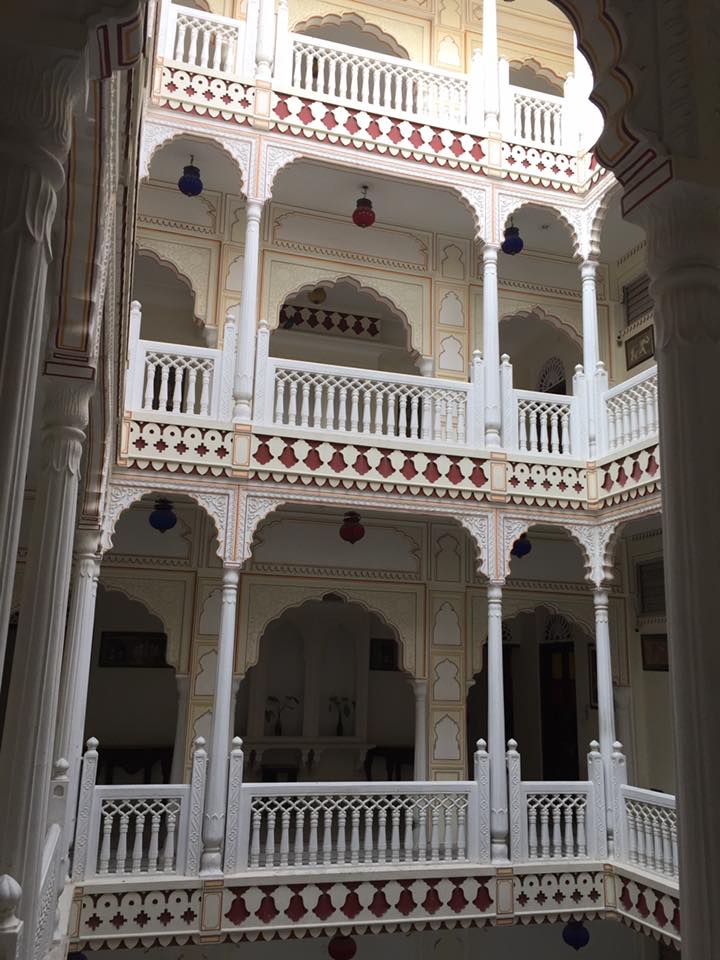
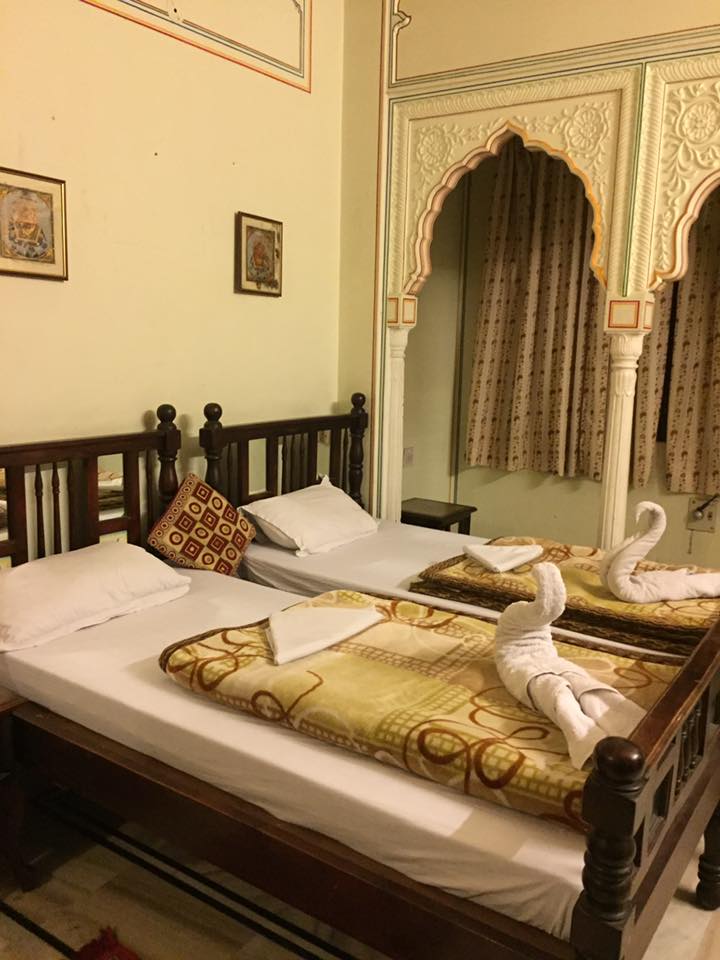
Krishna Palace Jaipur swans 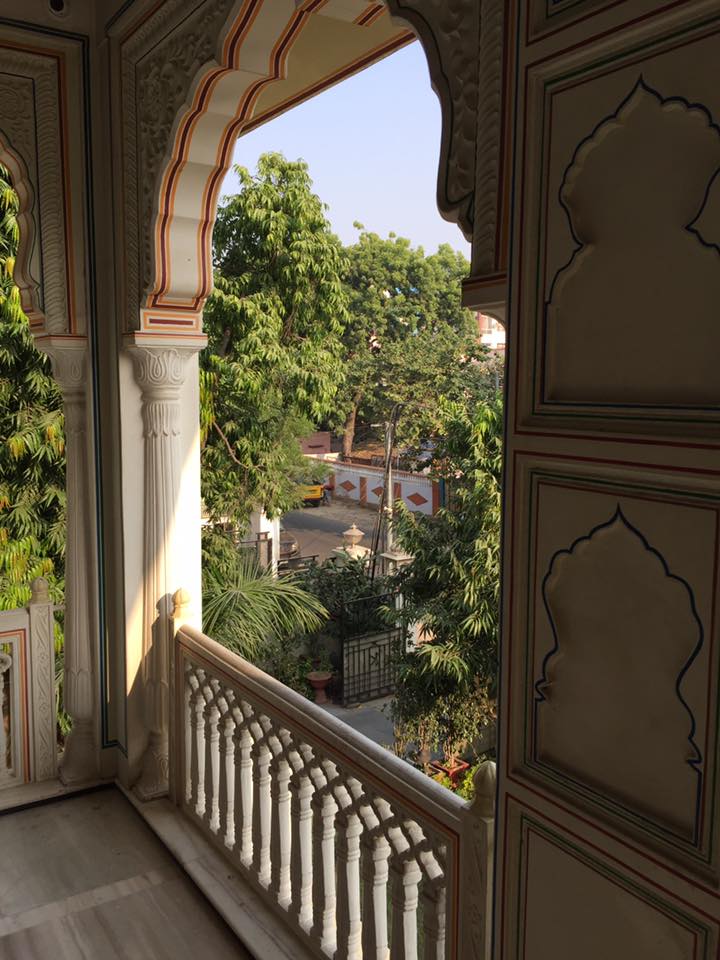
Krishna Palace Jaipur view
One evening we visited a local shop in Jaipur that sold Indian teas and spices:
* Darjeeling tea for the morning
* Kashmir tea is for sleeping – no caffeine
* Nilgiri tea is for energy
* Assam tea for digestion – slimming tea
* Himalaya tea for health
* Green Tea for anti biotic antioxidant; and of course
* Masala Chai Tea.
Saffron
We learned there are 2 types of saffron red or yellow
Put in water to test – real saffron turns yellow. Yellow flowers have ‘head and tail’. Red is fake- mice hair dyed red and no head and tail!
You can keep saffron in fridge for 6 years
Spices and blends were also available: tumeric, cumin, ginger, chili, coriander, mango powder and many others were also available in many combinations and sizes.
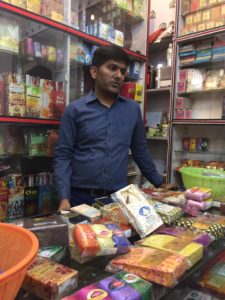
Hawa Mahal – Palace of Winds (and windows)
We enjoyed exploring the Palace of Winds in Jaipur on 31 October. It was where royal women who lived in the palace watched the world go by through small windows. The beautiful doors, windows and architecture was stunning, and we took lots of photos framed by the lovely scalloped archways.
“Hawa Mahal (English translation: “Palace of Winds” or “Palace of the Breeze”) is a palace in Jaipur, India. It is constructed of red and pink sandstone. The palace sits on the edge of the City Palace, Jaipur, and extends to the zenana, or women’s chambers.
Hawa Mahal’s structure was built in 1799 by Maharaja Sawai Pratap Singh.
The original intent of the lattice design was to allow royal ladies to observe everyday life and festivals celebrated in the street below without being seen, since they had to obey the strict rules of “purdah”, which forbade them from appearing in public without face coverings. This architectural feature also allowed cool air from the ‘Venturi effect’ to pass through, thus making the whole area more pleasant during the high temperatures in summer.” (from Wikipedia)
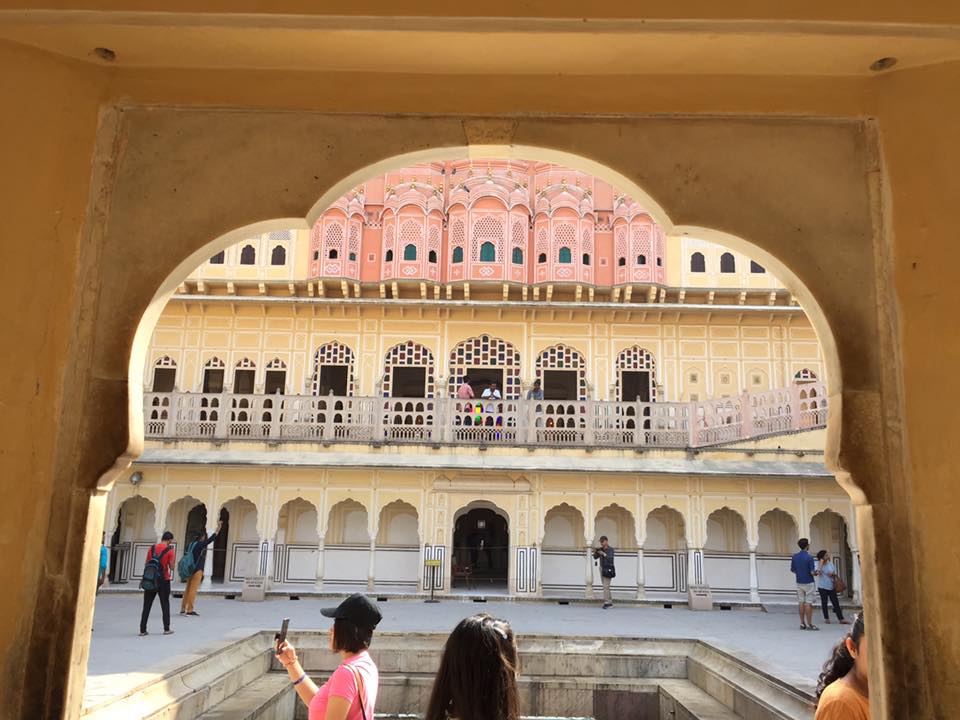
Hawa Mahal Jaipur framed 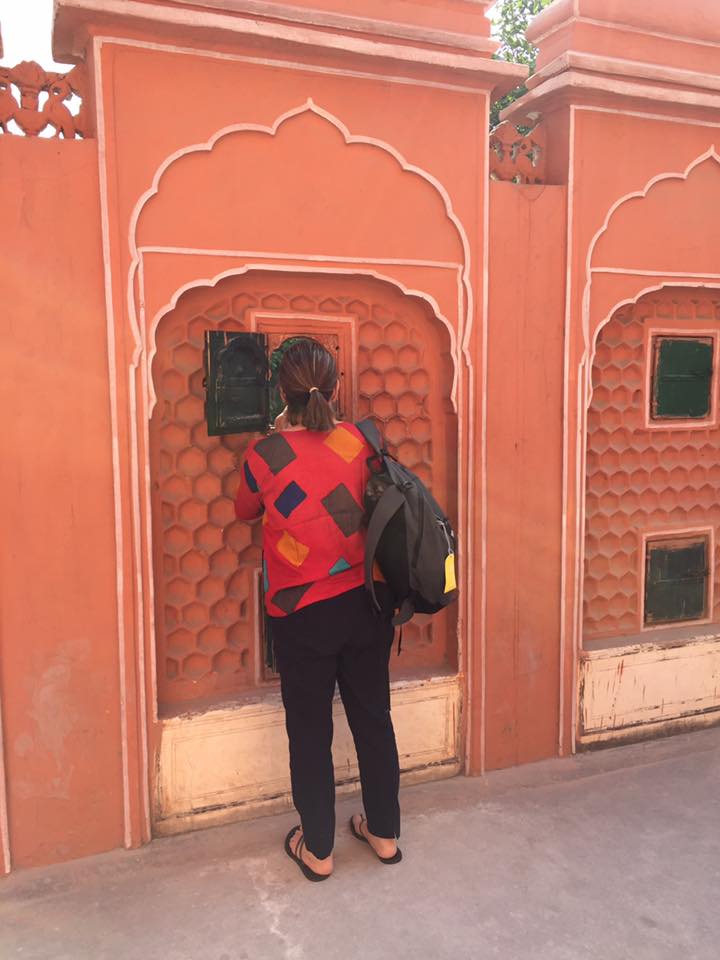
Hawa Mahal Jaipur 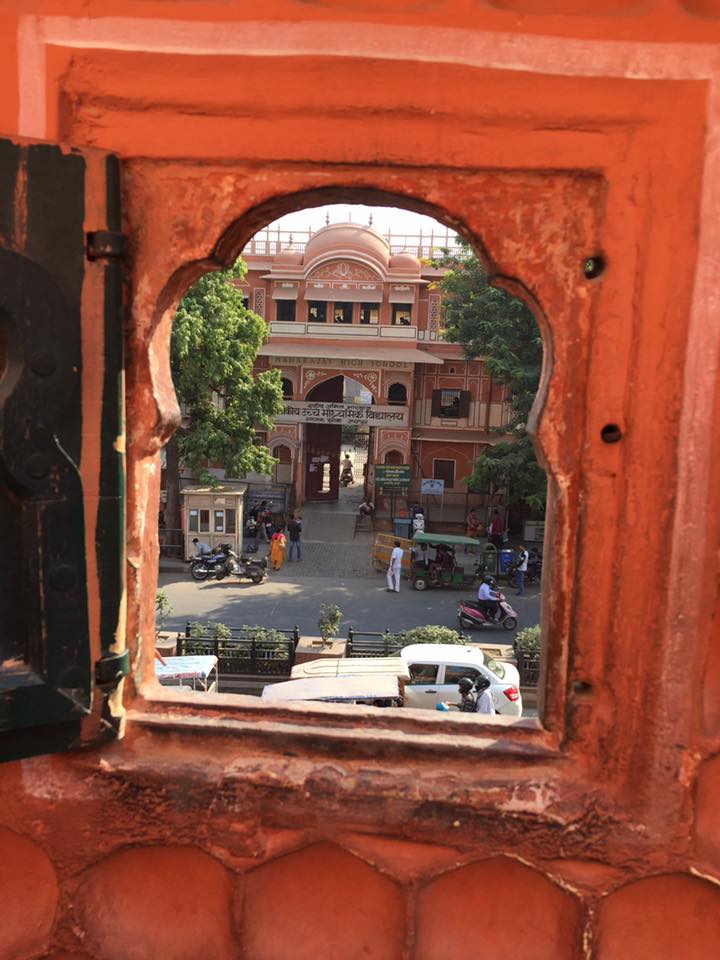
Hawa Mahal Jaipur view 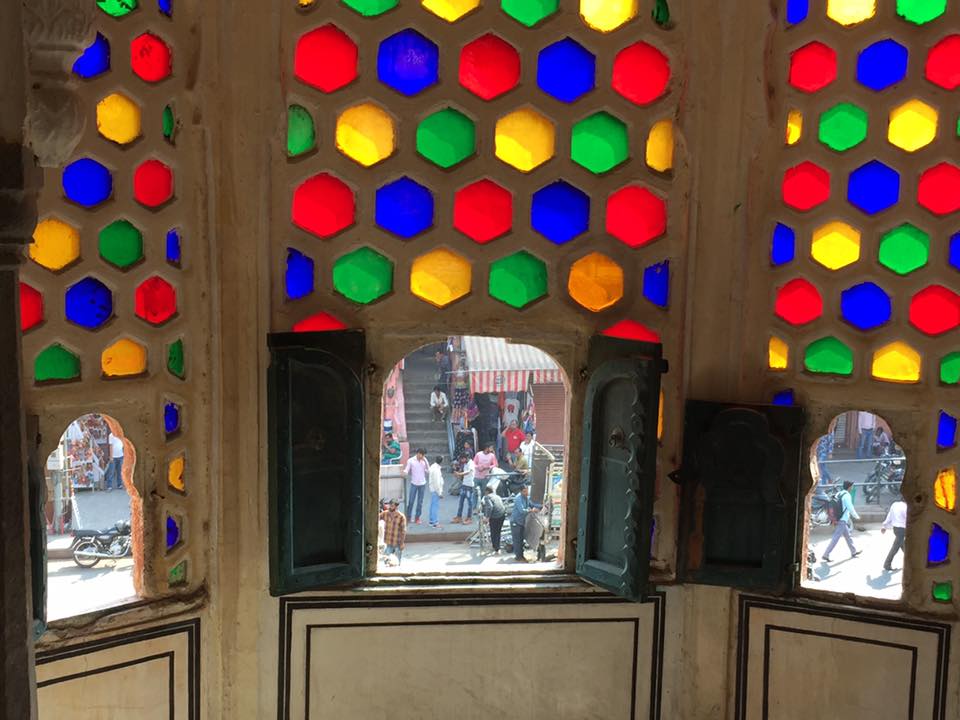
Hawa Mahal Jaipur coloured view 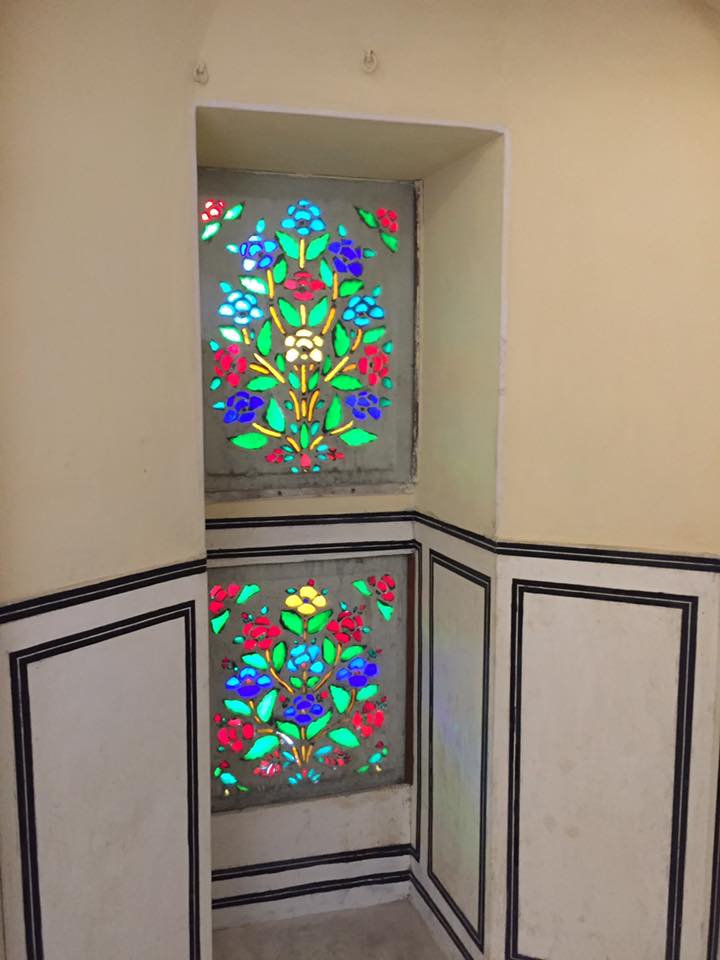
Hawa Mahal Jaipur coloured windows 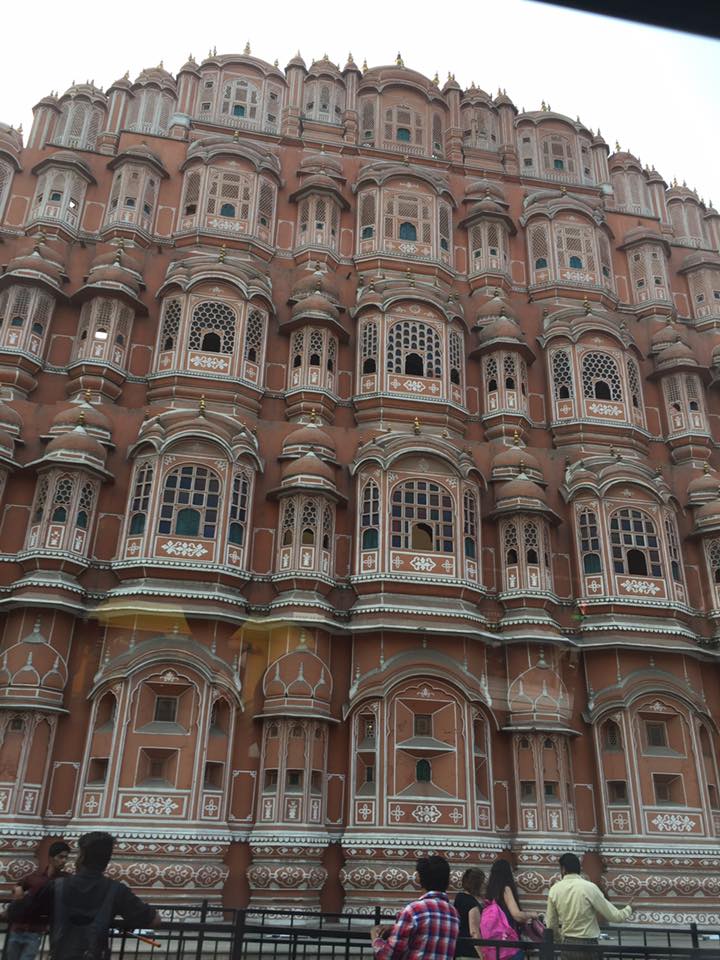
Hawa Mahal Jaipur exterior 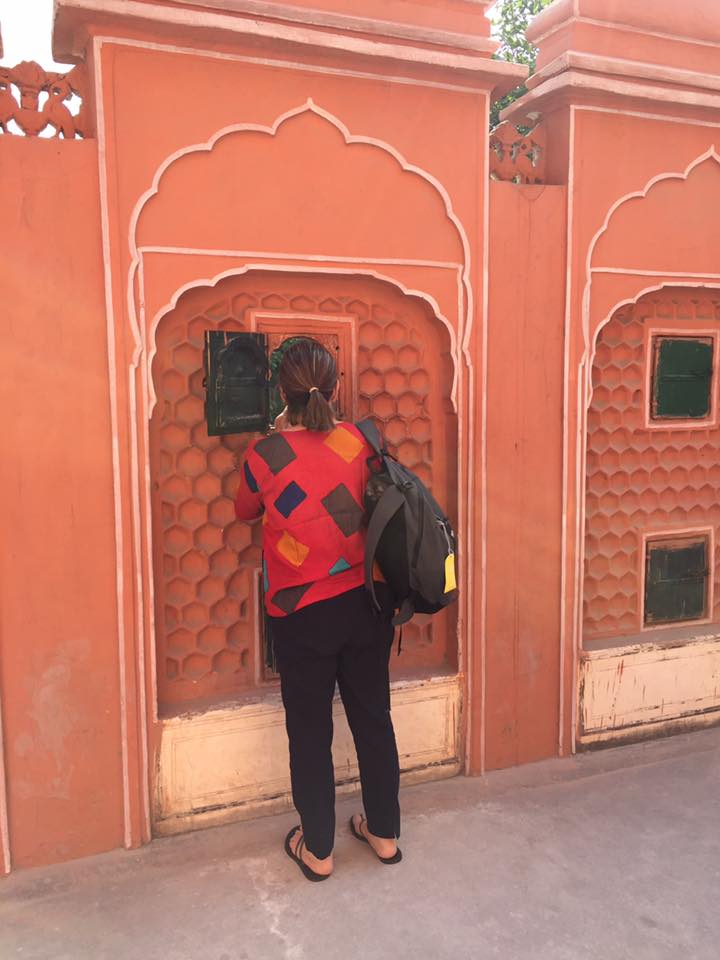
standing at the window 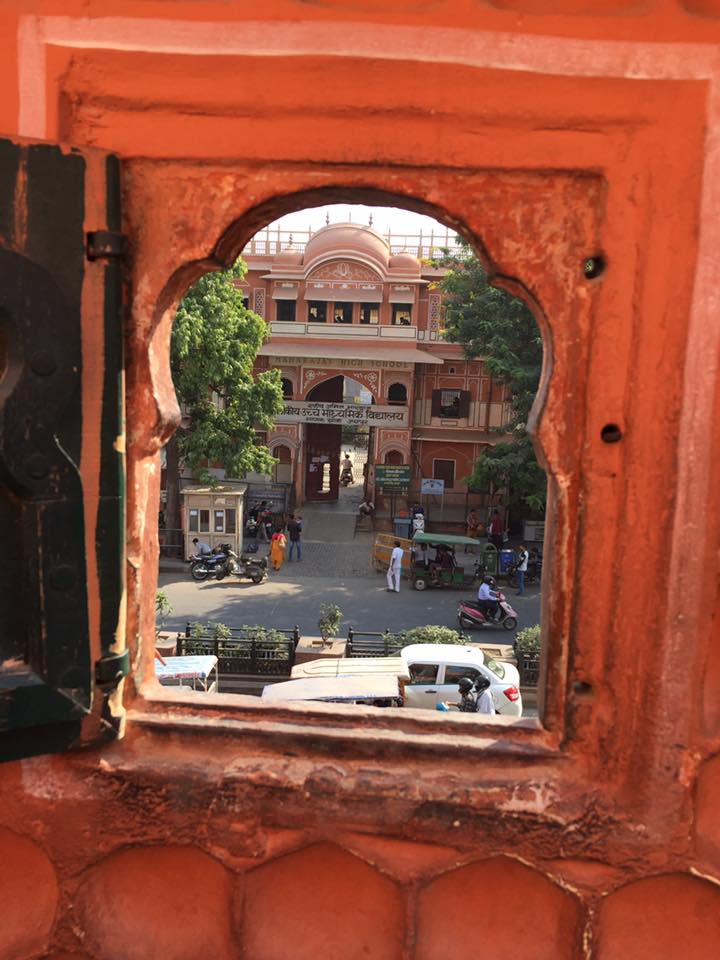
this is what she sees 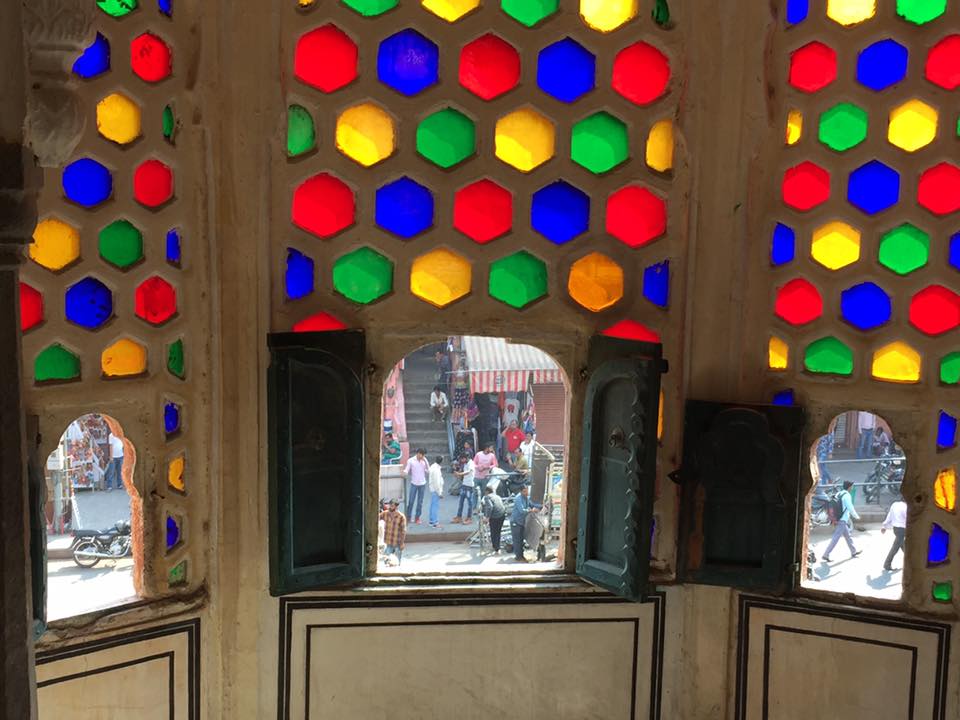
window view 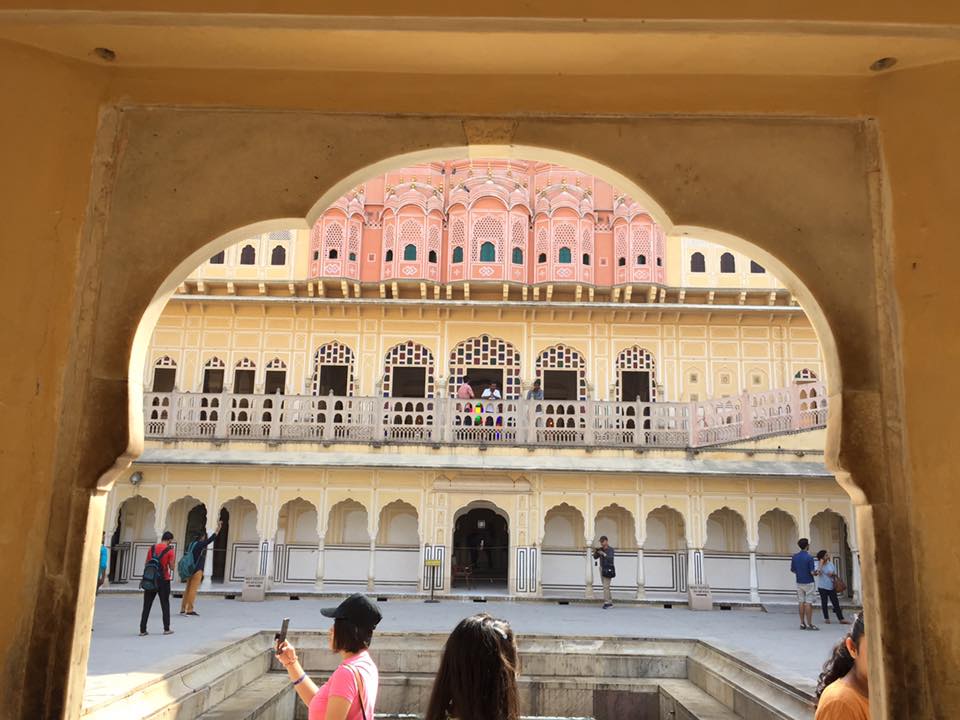
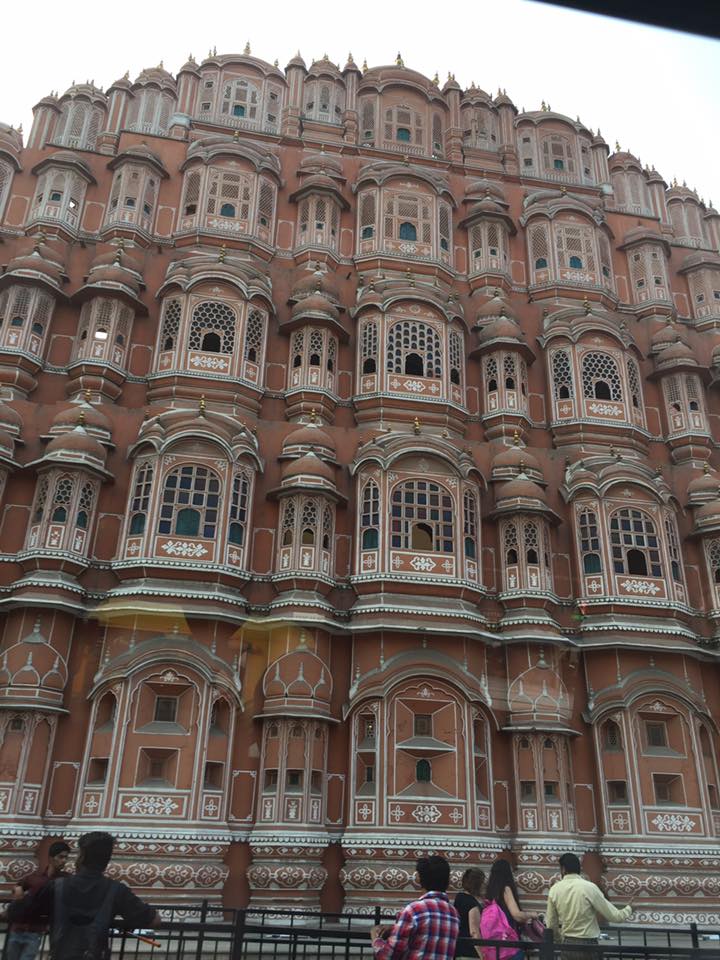
Hawas Mahal from the street
Three of us were taken in the bus to Kerala Ayurvedic Massage – where we had a great Ayurvedic full body massage. Unfortunately it took 1 hour to get back to hotel through Diwali traffic in Jaipur!
Diwali
“The Festival of Lights (also known as Deepavali (deep – lamp, vali – array in Southern India). In Northern India, it is more commonly known as Diwali or Divali and Dipavali.
In all countries and for Hindus around the world, the celebration revolves around the triumph of good over evil, purity over impurity, light over darkness. It is one of the most important Hindu festivals with over 800 million people celebrating the festival in various ways.
Why is Diwali celebrated?
Diwali marks the return of Lord Rama, who was the seventh incarnation of Vishnu, from a fourteen year exile.
The Festival of Lights takes place on the darkest night (first night of the new moon) in the month of Kartik in the Hindu calendar.
Across India streets and temples are decorated with spectacular light displays and colorful garlands. In their homes, people light small oil lamps called diyas. It is believed that deceased relatives come back to visit their families on Earth during this festival and the lights are a way to guide the spirits home. The sound of firecrackers exploding is common as the noise is said to drive away evil spirits.
Families, friends and business associates exchange gifts and sweets, settle old business deals and are encouraged to rid themselves of hate, anger and jealousy.
The festival is a time for rejoicing and renewal.”
Amber Fort
On 1st October we visited the Amber Fort, and I went on an elephant ride up to the Fort. It was very slow and ponderous, swaying to and fro. We didn’t go inside the palace or fort buildings.
“Amer, or Amber, derives its name from the Ambikeshwar Temple, built atop the Cheel ka Teela. Ambikashwara is a local name for the god Shiva. However, local folklore suggests that the fort derives its name from Amba, the Mother Goddess Durga.[
Amer palace is situated on a forested hill promontory that juts into Maota Lake near the town of Amer, about 11 kilometres (6.8 mi) from Jaipur city, the capital of Rajasthan.” (Wikipedia)
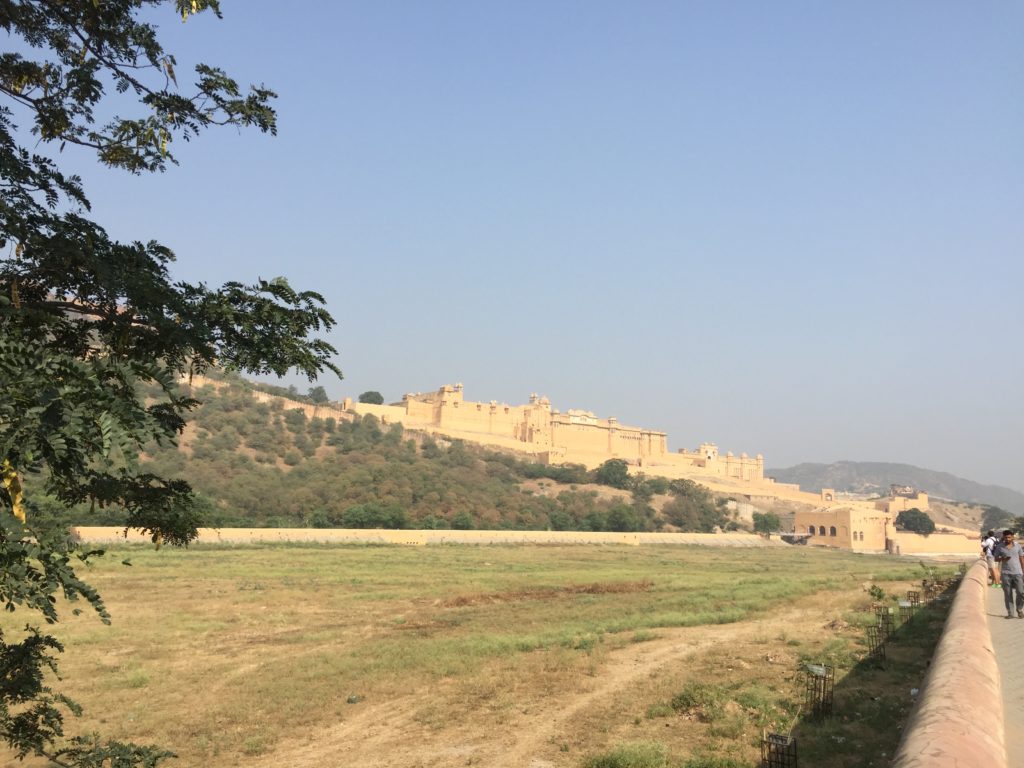
Amber or Amer Fort 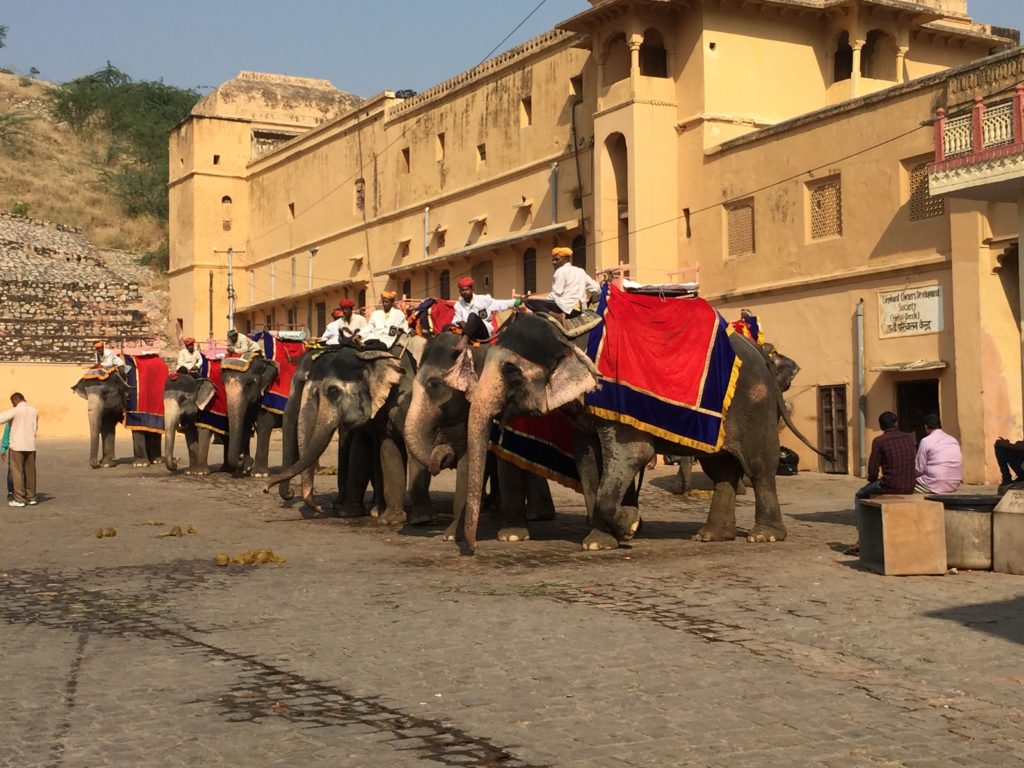
which elephant? 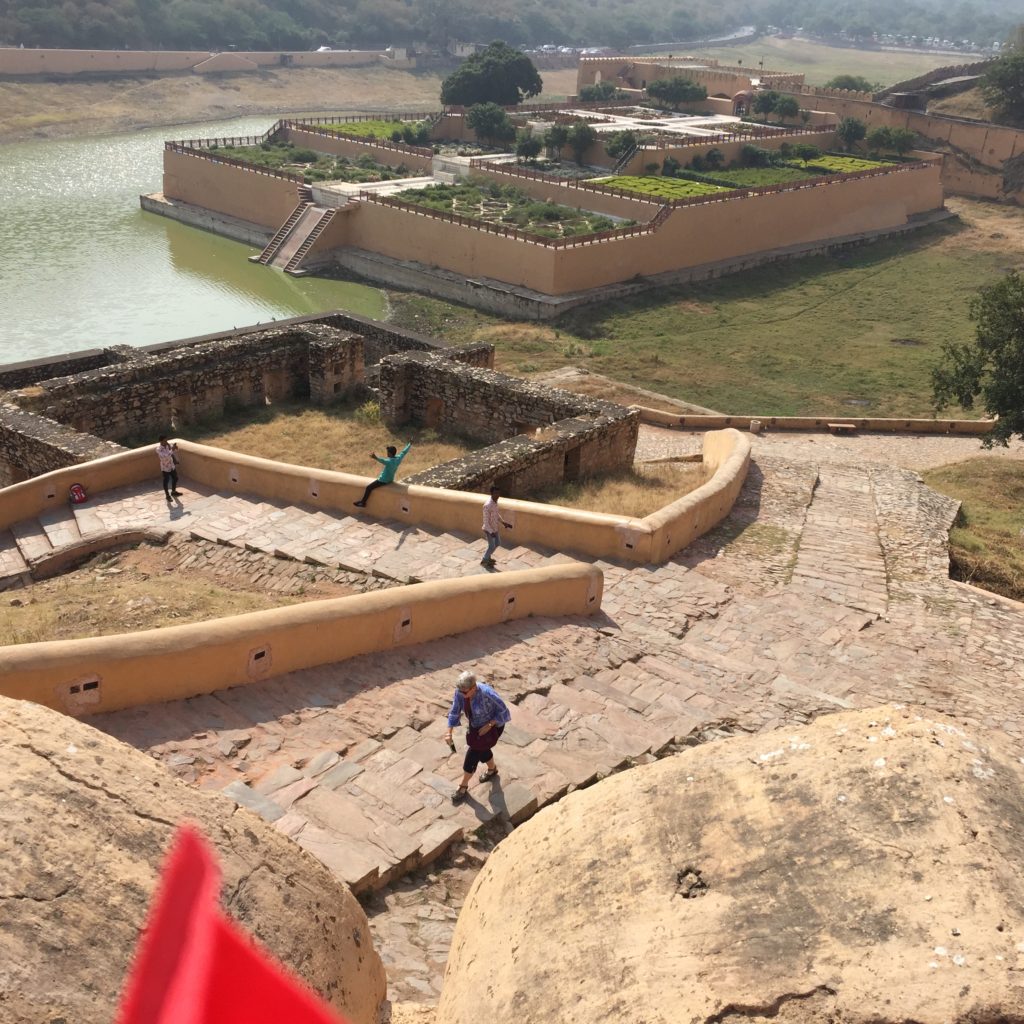
looking down from Amber Fort to lake palace 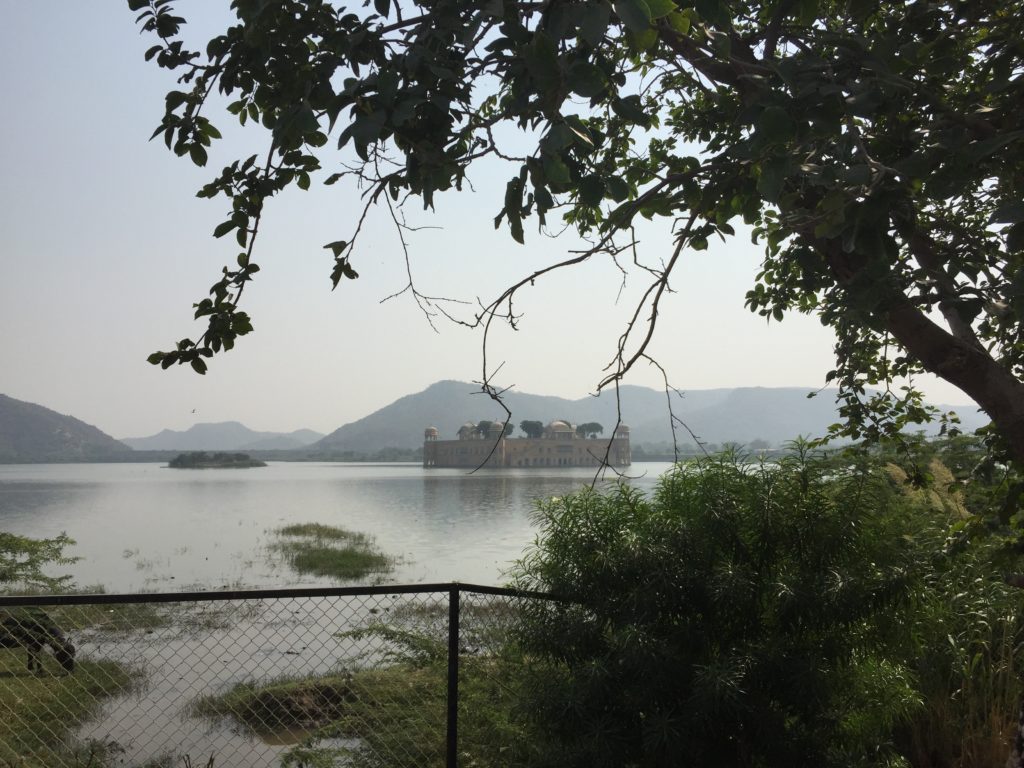
Amer Lake Palace
One outstanding lunch was at Surabhi restaurant and Turban Museum with Rajasthani musician – I had Chicken Jaipuri Korma, rice and refreshing Kingfisher beer.
Alcohol prices in Jaipur: Wine Savignon Blanc 1200 rupees for 75 ml bottle and delicious Kingfisher beer 750 ml 1200 rupees (about $24AUD!).
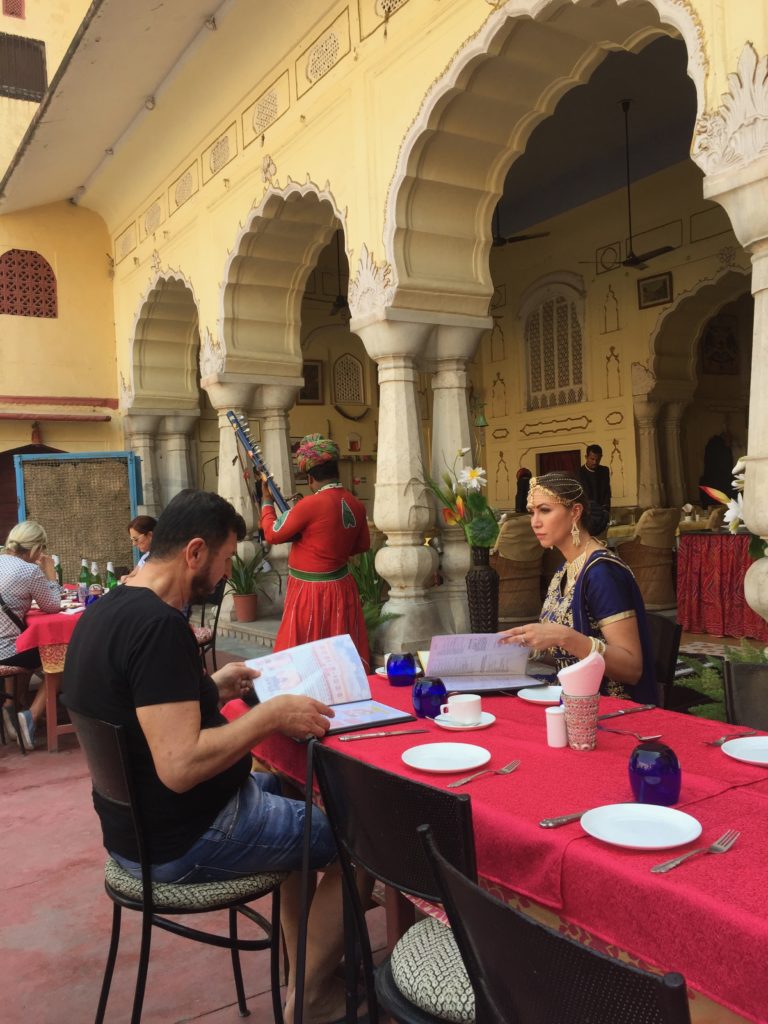
Beautiful lady in Indian dress at restaurant 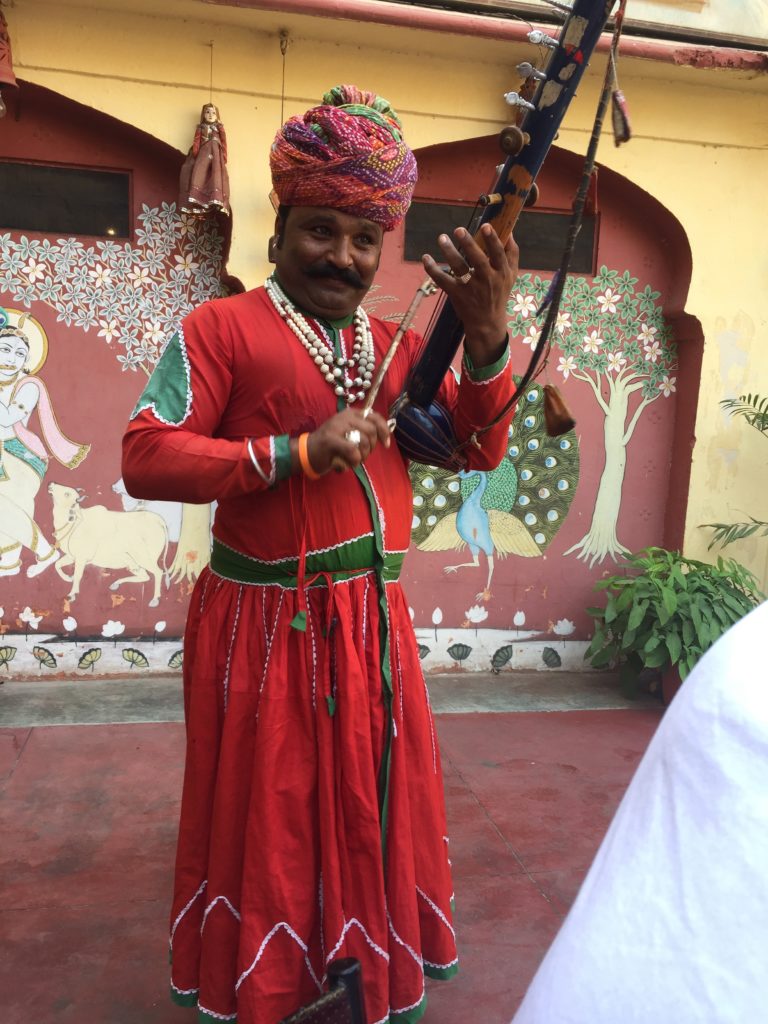
Rajasthani musician in Jaipur restaurant 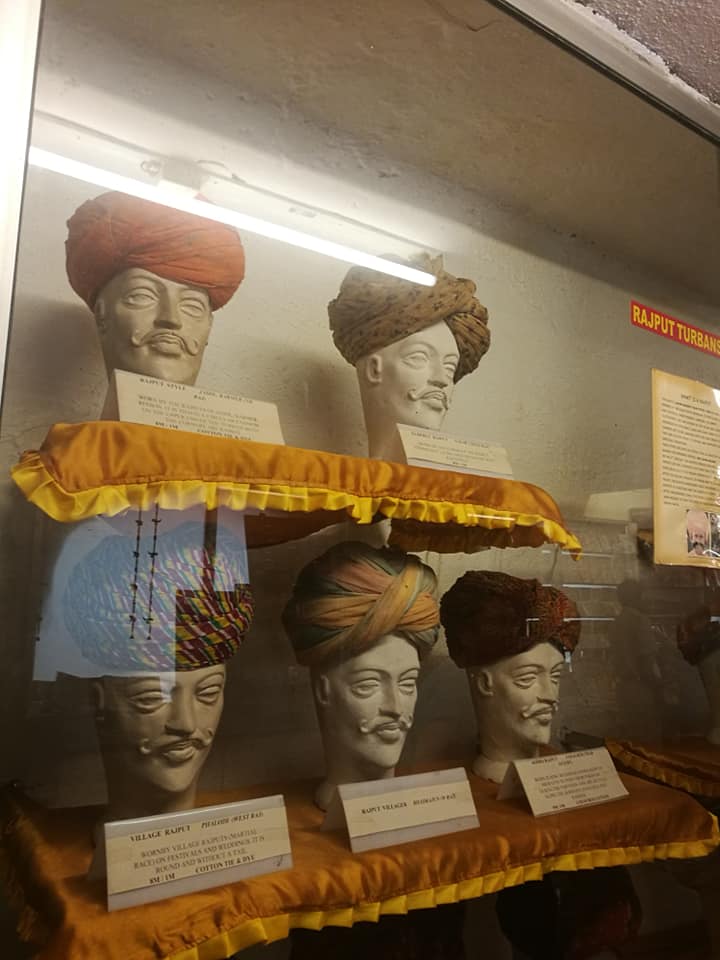
Jaipur blue pottery factory
We were lucky to be invited to see a small Jaipur Blue pottery factory in the rural area outside Jaipur on 1st November. All pottery is made by hand. First they mix quartz powder, glass, salt and acacia gum, add water. Make chapatis, put in mould, cut edges off, fill, turn over, sun dry to make bowls, or hand painted, glazed and fired in kiln. All pottery is hand made and hand coloured.
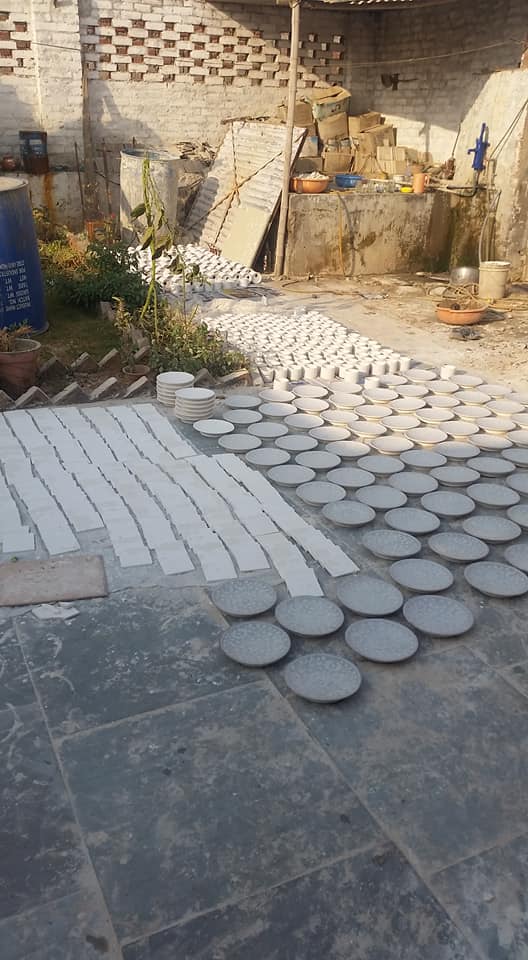
pottery drying in sun 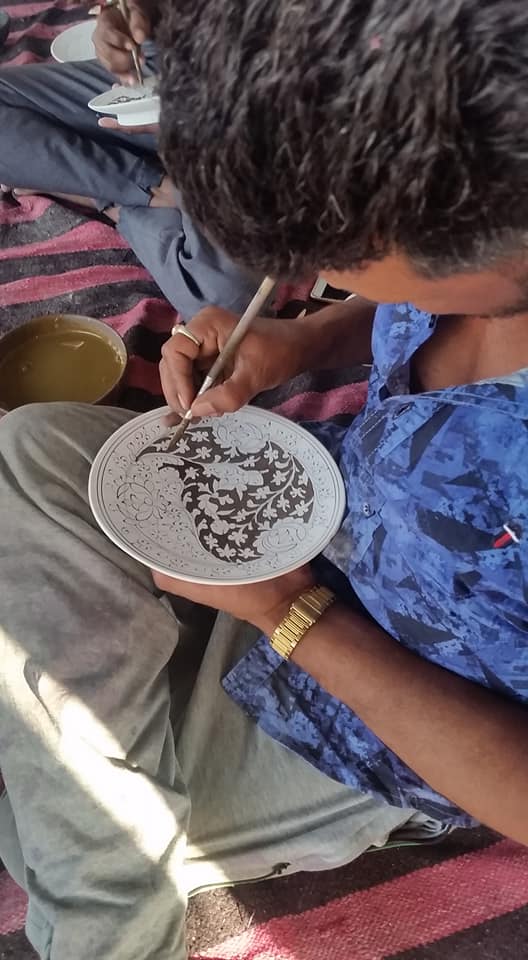
hand painted pottery 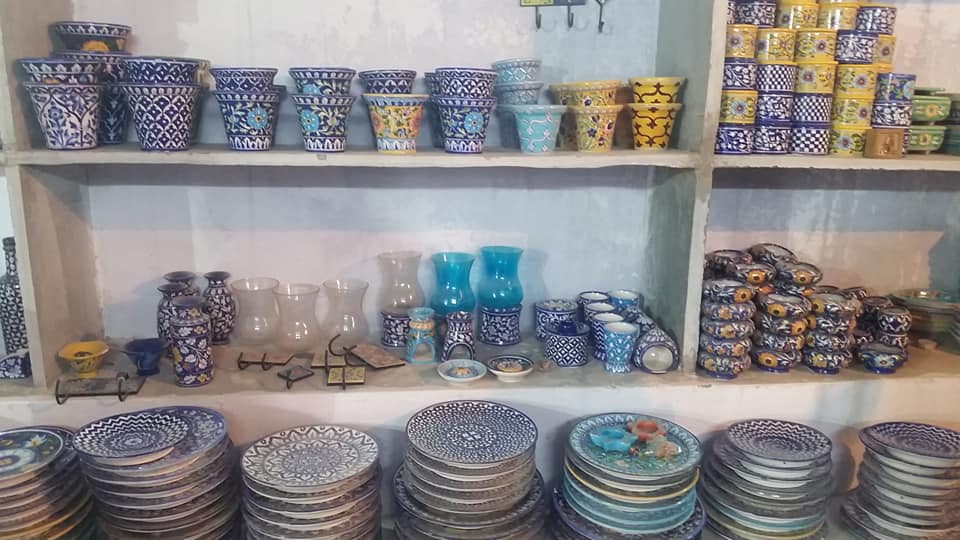
Jaipur blue pottery for sale
The next day we left Jaipur to go to Agra.
To be continued…
Part 3 HERE
More photos HERE
